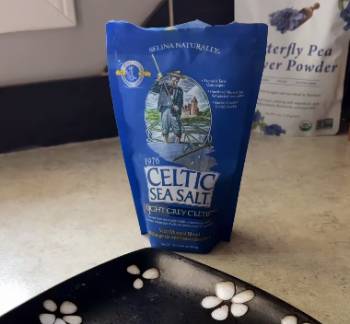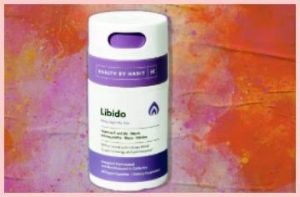If you’re still using regular table salt, you’re missing out on a game-changing upgrade. Celtic Sea Salt isn’t just about enhancing flavor—it’s about giving your body over 74 vital trace minerals while keeping sodium levels in check. The unprocessed nature of this salt means you’re getting a pure, additive-free product straight from pristine coastal waters. It’s perfect for cooking, baking, and seasoning, and it has a taste that makes every dish shine. If you want a healthier, tastier alternative to table salt, Celtic Sea Salt is the way to go.
What Makes Celtic Sea Salt Stand Out?

Celtic Sea Salt stands out because it’s more than just salt—it’s a mineral-rich, unprocessed seasoning that enhances both flavor and health. Unlike heavily refined table salt, which is stripped of its natural elements, Celtic Sea Salt retains over 74 essential minerals, including magnesium, calcium, and potassium. This makes it a superior choice for those looking to support their body’s natural functions, from hydration to muscle recovery.
Another key differentiator is the harvesting process. Celtic Sea Salt is hand-harvested from pristine coastal regions using sustainable methods that preserve its natural structure and mineral content.
This ensures that every grain delivers pure, unadulterated goodness. Unlike many salts that undergo high-temperature processing and contain anti-caking agents, Celtic Sea Salt is dried at low temperatures to maintain its rich composition.
Taste is another factor that sets it apart. Many users find that Celtic Sea Salt has a fuller, more complex flavor compared to standard salt. It enhances food without overpowering it, making it a favorite among chefs and home cooks alike. The slight moisture content also helps it blend well with ingredients, making it perfect for seasoning everything from meats to salads.
Additionally, Celtic Sea Salt’s versatility extends beyond the kitchen. People use it for electrolyte balance, skincare, and even holistic remedies like saltwater gargles and baths. With its unmatched purity, robust flavor, and health benefits, it’s easy to see why Celtic Sea Salt remains a top choice for those seeking both quality and wellness in their daily lives.
The Taste and Texture Difference
The taste and texture of Celtic Sea Salt are what truly set it apart from ordinary table salt and even other sea salts. Its flavor is deeper, more complex, and naturally balanced, enhancing food without the harsh, overly salty bite of refined salt.
Many people describe its taste as more “alive,” bringing out the natural flavors of food rather than overpowering them. Because it contains over 74 essential minerals, including magnesium and calcium, the salt has a slightly briny yet smooth taste, making it a favorite among chefs and home cooks alike.
Texture-wise, Celtic Sea Salt has a distinct moisture content that keeps it from being dry and overly processed. This slight dampness allows the minerals to stay intact, giving it a softer, more natural feel compared to the starkly uniform crystals of table salt. Depending on the variety, you’ll find Celtic Sea Salt in both fine-ground and coarse forms.
The fine ground version blends seamlessly into dishes, making it perfect for everyday cooking and seasoning. The coarse version, on the other hand, adds a satisfying crunch when sprinkled over roasted vegetables, grilled meats, or even chocolate-based desserts.
Unlike standard table salt, which is heavily processed to be free-flowing and uniform, Celtic Sea Salt maintains its raw, hand-harvested integrity. It dissolves beautifully in soups, sauces, and marinades while also providing a finishing touch when sprinkled over food. This balance of texture and taste makes Celtic Sea Salt a standout choice for those looking to elevate their cooking.
How to Get the Most Out of Your Celtic Sea Salt?

To get the most out of your Celtic Sea Salt, it’s essential to use it strategically in both cooking and wellness routines. Since this salt retains its natural moisture, it works best when sprinkled onto food just before serving to enhance flavor. For everyday cooking, use it in soups, stews, and sauces where it dissolves easily, distributing its rich mineral content throughout the dish. If you prefer a finer texture, store it in a salt grinder for easy use.
Beyond the kitchen, Celtic Sea Salt offers incredible health benefits. Mix a pinch into a glass of water for natural electrolyte support, helping with hydration and mineral balance. This is especially useful after intense workouts or on hot days when your body needs replenishment. Some people even use it as a nasal rinse or for gargling to soothe sore throats.
Storage is another key factor in maximizing its quality. Since Celtic Sea Salt has a higher moisture content than typical table salt, keep it in a glass or ceramic container with a loose-fitting lid to prevent clumping while maintaining its freshness. Avoid plastic or metal containers, as they can affect the salt’s purity.
For an at-home spa treatment, try adding a handful of Celtic Sea Salt to a warm bath for a natural mineral soak. The trace elements can help relax muscles and rejuvenate the skin. Whether for cooking, hydration, or skincare, using this salt mindfully ensures you get the full range of benefits it has to offer.
Pros and Cons of Celtic Sea Salt

Pros:
- Rich in minerals: Contains over 74 trace minerals like magnesium, calcium, and potassium, which support overall health and hydration.
- Less processed: Unlike table salt, Celtic Sea Salt is naturally harvested and minimally processed, retaining its nutrients and natural moisture.
- Better flavor: Offers a complex, well-rounded taste that enhances food without being overly salty or harsh.
- Supports hydration: The balanced mineral content helps the body absorb and retain water more efficiently, making it ideal for those prone to dehydration.
- Lower in sodium: Naturally lower in sodium compared to refined table salt, making it a better option for those monitoring their sodium intake.
- Versatile use: Works well in cooking, seasoning, baking, and even in health-related uses like sole water and skin treatments.
- Sustainably harvested: Hand-harvested using traditional methods, preserving the environment and ensuring purity.
- No additives: Free from anti-caking agents, bleaching agents, and artificial iodine, making it a more natural choice.
Cons:
- Higher cost: More expensive than table salt and some other sea salts due to its quality and harvesting methods.
- Moisture retention: The natural moisture content can cause clumping, making it harder to use in standard salt shakers.
- Not always convenient: Coarser varieties may require a grinder, adding an extra step in food preparation.
- Lacks added iodine: Unlike iodized salt, it doesn’t contain artificially added iodine, which some people rely on for thyroid health (though iodine can be sourced from other foods).
- Availability: Not as widely available as table salt, requiring online ordering or specialty store purchases.
Also Read: My Thoughts On Blake’s Chicken Pot Pie
Celtic Sea Salt Vs. Other Brands
- Celtic Sea Salt Vs. Redmond Real Salt
Celtic Sea Salt and Redmond Real Salt both offer unrefined, mineral-rich options, but they come from different sources. Celtic salt is harvested from coastal regions of France, retaining moisture and a briny flavor. Redmond Real Salt, sourced from ancient sea beds in Utah, has a drier texture and a subtly sweet taste. While both provide essential minerals, Celtic Sea Salt is naturally lower in sodium and contains higher moisture, making it great for seasoning foods with a rich, complex flavor. Redmond, on the other hand, is better for those who prefer a dry, easy-to-sprinkle salt.
- Celtic Sea Salt Vs. Himalayan Pink Salt
Both Celtic Sea Salt and Himalayan Pink Salt are prized for their trace minerals, but their differences stand out. Celtic salt has a moist, fine texture and a distinct oceanic taste, while Himalayan salt is dry, coarser, and slightly milder in flavor. Himalayan salt is mined from ancient rock deposits in Pakistan, making it a solid choice for grinders, whereas Celtic salt’s naturally damp texture helps it dissolve quickly. If you love a more mineral-rich, slightly briny taste, Celtic Sea Salt is the better pick. Himalayan salt is great for those who prefer a crunchier texture.
- Celtic Sea Salt Vs. Baja Gold
Baja Gold and Celtic Sea Salt are both natural, unrefined salts, but their origins affect their composition. Celtic salt is hand-harvested from coastal France, while Baja Gold comes from the Sea of Cortez in Mexico. Baja Gold is even richer in trace minerals, boasting over 90, while Celtic Sea Salt contains around 74. Celtic salt has a stronger briny taste, while Baja Gold is milder and dissolves more easily. If you want a salt with a bolder, more traditional sea salt taste, go for Celtic. If you’re after a lighter, more balanced mineral content, Baja Gold is a great choice.
- Celtic Sea Salt Vs. Maldon Sea Salt
Maldon Sea Salt is known for its crisp, flaky texture, making it a favorite for finishing dishes, while Celtic Sea Salt has a moist, fine grain that integrates well into everyday cooking. Maldon’s unique pyramid-shaped flakes provide a delicate crunch, enhancing textures in salads, meats, and baked goods. Celtic salt, with its higher moisture content, delivers a more intense, oceanic flavor and dissolves easily in soups, stews, and sauces. If you want a delicate, gourmet finishing salt, Maldon is excellent. But if you need an all-purpose salt with deep mineral richness, Celtic is the better option.
- Celtic Sea Salt Vs. Fleur de Sel
Fleur de Sel and Celtic Sea Salt both come from coastal salt beds in France, but they serve different purposes. Fleur de Sel is a delicate, flaky salt skimmed from the surface of salt ponds, offering a light, crunchy texture perfect for finishing dishes. Celtic Sea Salt, harvested from the same regions, retains more moisture and has a coarser grind, making it ideal for everyday seasoning. Fleur de Sel is best for sprinkling on top of food for a subtle, gourmet touch, while Celtic Sea Salt is the go-to for deep, mineral-rich flavor in cooking and baking.
Also Read: My Thoughts On Kohler Sea Salt Vs. White
Frequently Asked Questions (FAQs)
Yes! It’s packed with over 74 essential minerals that help with hydration, muscle function, and overall health. Unlike refined table salt, it retains its natural nutrients, making it a superior choice.
The Light Grey Celtic variety is the least processed and most mineral-rich option. It’s hand-harvested using traditional methods to maintain its full spectrum of nutrients.
Both are excellent mineral-rich salts, but Celtic Sea Salt has a more balanced mineral profile and higher moisture content, making it easier to use in cooking. Baja Gold has a slightly higher magnesium content but lacks the well-rounded benefits of Celtic Sea Salt.
It depends on what you’re looking for. Celtic Sea Salt has more moisture and a broader range of minerals, while Himalayan salt is drier and has a milder flavor. If you want a salt that dissolves easily and provides optimal mineral balance, Celtic Sea Salt is the better option.
Final Thoughts
If you’re serious about flavor and nutrition, Celtic Sea Salt is a must-have in your kitchen. It enhances every dish with a depth of taste you won’t find in regular table salt, and it delivers a powerhouse of minerals that your body needs. Yes, it’s pricier than regular salt, but the quality, taste, and health benefits make it worth every penny. Once you experience the difference, there’s no going back.



